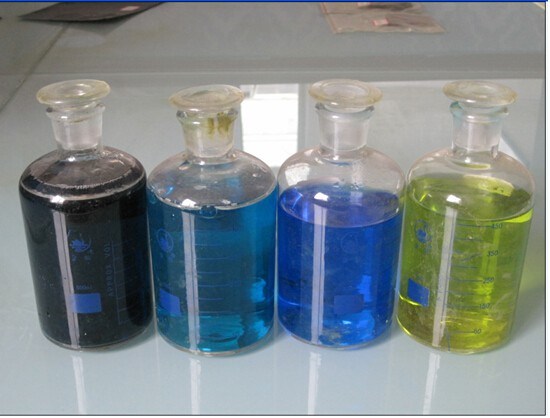Vanadium redox batteries are a type of rechargeable flow battery that uses vanadium ions in different oxidation states to store chemical potential energy. The technology behind vanadium redox batteries employs vanadium electrolyte solutions which allow the battery to provide energy storage on a large scale.
How Vanadium Redox Batteries Work
A vanadium redox battery consists of two tanks containing liquid electrolytes separated by a membrane. The electrolytes contain vanadium ions that can exist in four different oxidation states, V2+, V3+, V4+, and V5+. In one tank, the vanadium ions exist mostly in the V2+ and V3+ state, while in the other they exist primarily in the V4+ and V5+ state.
During charging, the V3+ ions in the first tank are oxidized into V4+ ions and migrate across the membrane into the other tank. At the same time, the V5+ ions in the second tank are reduced into V4+ ions. This process stores chemical energy in the form of the separation of vanadium ions in different oxidation states across the membrane.
Discharging reverses this process. The V4+ ions in one tank are reduced into V3+ ions and migrate back across the membrane. At the same time, the V4+ ions in the other tank are oxidized back into V5+ ions. This forces electrons to do work externally and provides electrical energy from the stored chemical potential energy. The Vanadium Electrolytes can be recharged and discharged many times without significant degradation.
Advantages of Vanadium Electrolyte
Vanadium redox batteries have several advantages over other battery technologies for large-scale energy storage:
Long Cycle Life – Vanadium redox batteries have demonstrated over 5,000 charge/discharge cycles with little capacity loss, making them very durable for stationary energy storage applications. This far exceeds other battery technologies.
Non-toxic Materials – The vanadium electrolytes are non-flammable and contain no toxic materials. Spilled electrolyte presents no environmental or safety issues.
Thermal Stability – Vanadium redox batteries can operate efficiently over a wide temperature range from below freezing to over 50°C, unlike lithium-ion batteries which degrade in high temperatures.
Scalability – Because the energy storage is based on liquid electrolyte tanks, vanadium flow batteries can provide energy storage capacity ranging from kW to multiple MW simply by increasing the size of the tanks and membrane stack. This allows easy scaling to balance renewable grid supply.
Applications for Vanadium Electrolyte
Grid-Scale Storage
Vanadium redox batteries are well suited for large-scale stationary energy storage applications on the utility grid. Their multi-hour storage duration and scalability allow them to store energy from intermittent renewables like solar and wind to discharge later during peak demand periods. This provides a reliable renewable energy source to replace fossil fuel peaker plants. Several multi-MW vanadium flow battery installations have already come online in recent years for renewable integration and ancillary grid services.
Off-Grid Power Systems
The energy storage capabilities of vanadium redox batteries also make them suitable for off-grid renewable power systems, which require battery technologies that can sustain daily deep discharges. They are becoming an increasingly popular technology for isolated communities, mines, and industrial facilities needing backup power. Their long lifetime compared to lead-acid batteries also reduces operating costs for off-grid applications.
Electric Vehicles
While vanadium redox batteries cannot compete with lithium-ion for electric vehicle (EV) applications currently due to weight and size limitations, research efforts are aiming to increase their energy density. If successful, they could enable a new generation of electric buses and trucks for commercial fleet usage. Their thermal stability may also suit EV fast charging better than lithium-ion.
Ongoing Research and Improvements
While vanadium redox batteries have been in development since the 1980s, research continues to optimize their performance and reduce costs. Areas of focus include developing improved ion exchange membranes, higher energy density electrolyte formulations, enhanced charge/discharge efficiency, and alternative reactor designs. Several manufacturing companies are also working to commercialize vanadium flow batteries on a mass-production scale to take advantage of their merits for stationary storage applications. If technology advances and manufacturing costs decrease sufficiently, vanadium redox batteries have strong potential to become a cornerstone technology for the future renewable energy grid and zero-emissions transportation.
*Note:
1. Source: Coherent Market Insights, Public sources, Desk research
2. We have leveraged AI tools to mine information and compile it

